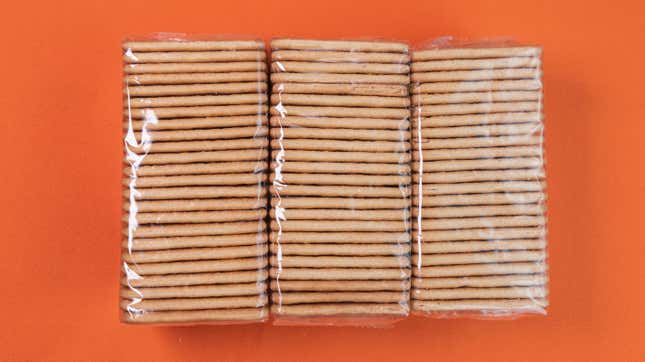
If you swear your go-to snacks and candies all seem to taste different—and worse—these days and you can’t quite put your finger on why, you’re not alone. Business Insider has taken a deep dive into food manufacturers’ increasing adoption of what BI calls skimpflation or flavorflation, aka modifying recipes in order to (you guessed it!) maintain or increase profit margins.
Our favorite foods are being made from worse ingredients
Ingredient costs, obviously, are a huge factor in the pricing of any consumer product. Just like anything, ingredient costs can and do go up, leaving food manufacturers trying to figure out if they should raise the cost of their products or, alternatively, tinker with their recipes, finding ways to cut down on expenses. Since customers don’t like paying higher prices for the same product, you can guess what some corporations choose to do.
This means that products can become a watered-down version of themselves—sometimes literally. Business Insider cites an instance of Conagra reducing the fat content in its Wish-Bone House Italian Dressing by 10%, replacing it with additional salt and... water. (Don’t worry, I’m actively getting mad thinking about this too.)
In 2013, Breyers, the ice cream of my childhood, had to legally change the labeling of its products from ice cream to “frozen dairy dessert.” Why? Because the company had reduced the amount of dairy fat in its product to the point that it didn’t legally qualify as ice cream anymore. With ice cream, it’s important to note that some novelties have to be labeled as frozen dairy desserts (as opposed to ice cream) due to the quantity of mix-ins, or toppings, that change the density of the end product, explains Allrecipes. In all cases, check the label to make sure you don’t bring home a product that bums you out.
The most egregious example of so-called skimpflation we’ve seen recently was October 2022, when Conagra dropped the amount of fat in its dairy-free Smart Balance spread from 64% to 39%, which meant water became the most plentiful ingredient in the product. Obviously, this affected the taste beyond what consumers would tolerate; fans review-bombed Smart Balance online so much that at one point 1,110 out of the 1,213 reviews rated it as a one-star product. Collective action worked, and Conagra brought back the old recipe.
Food manufacturers aren’t obligated to tell you when they make recipe changes
One of the lousy parts of skimpflation is that companies usually aren’t under any obligation to announce when they make changes to their recipes (as long as all the ingredients are accurately reflected on the label). But if you suspect something’s different about your go-to snack, look around online to see if other people have noticed this too, because chances are, they have. Reddit is usually the best place for a good old griping session.
If you’re curious to learn more about the phenomenon, Business Insider has more about health concerns, retail strategies, and other negative ways that skimpflation can indirectly affect us. This stuff happens way more than we’d like to think.